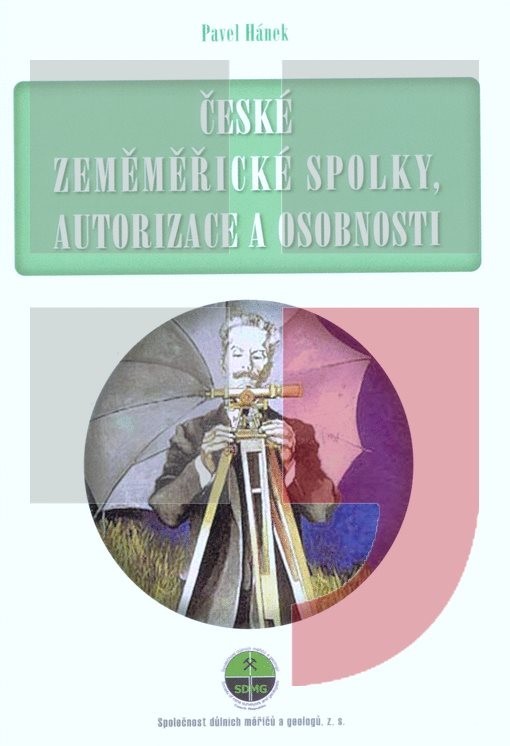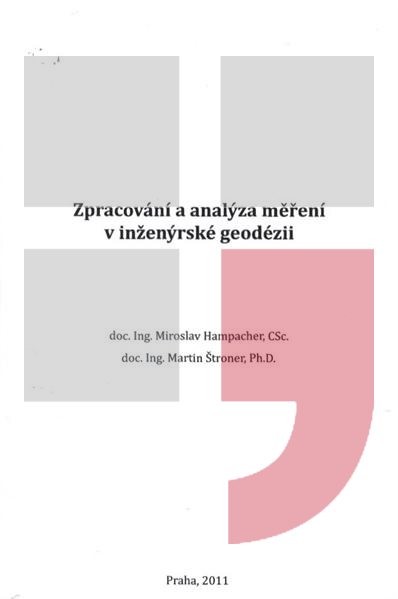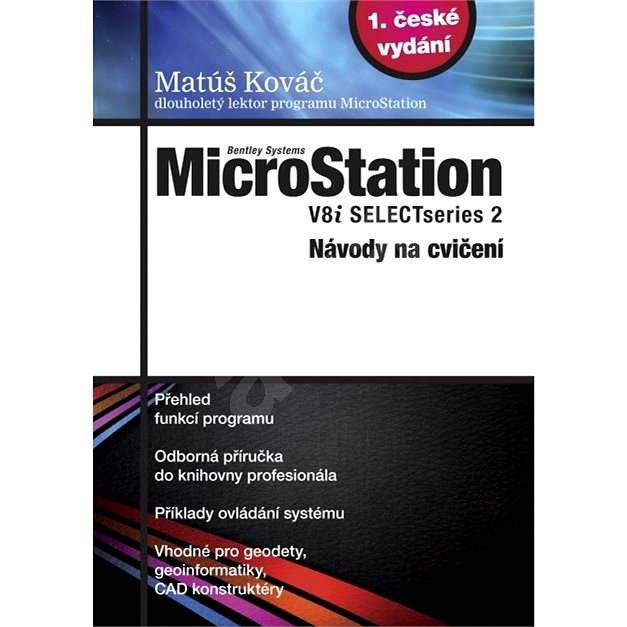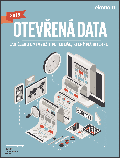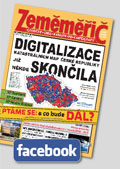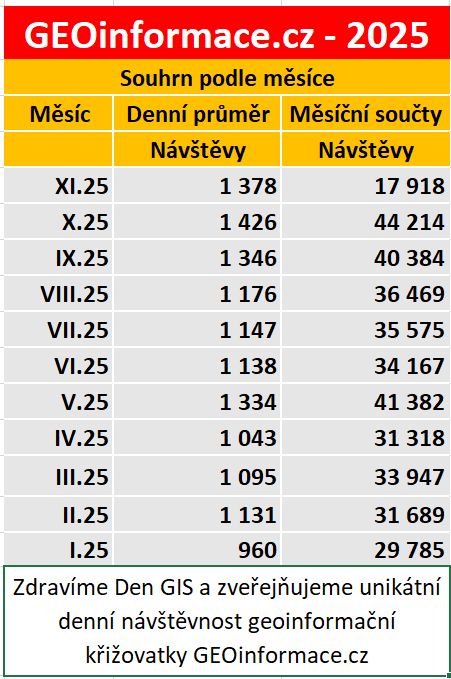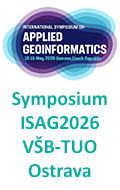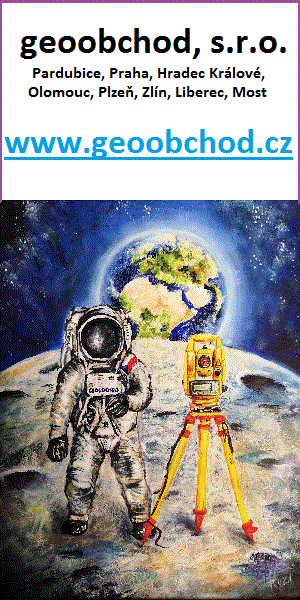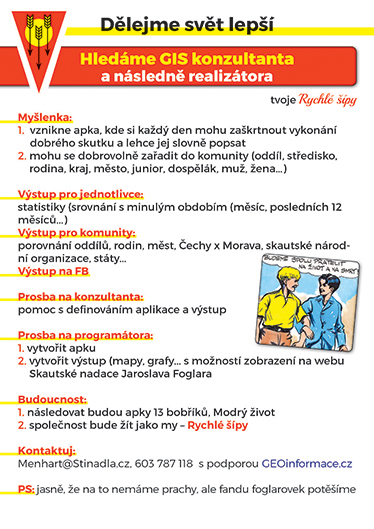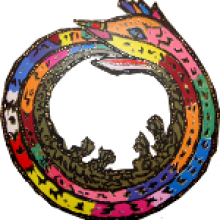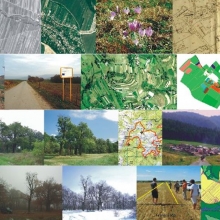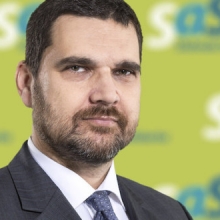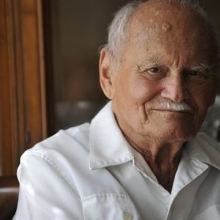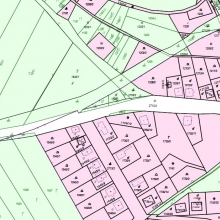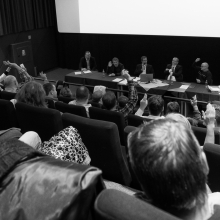zprávy
zdroje zpráv:Rada/odborný rada - správce informačních a komunikačních technologií
27.11.2015 13:21 ČÚZK - volná místa /Urady/Katastralni-urady/Katastralni-urady/Katastralni-urad-pro-Plzensky-kraj/Uredni-deska/Oznameni-a-jina-uredni-sdeleni/Volna-mista/Oznameni-o-vyhlaseni-vyberoveho-rizeni-na-sluz-(7)Rada/odborný rada - správce informačních a komunikačních technologií
27.11.2015 13:21 ČÚZK - předpisy a opatření /Urady/Katastralni-urady/Katastralni-urady/Katastralni-urad-pro-Plzensky-kraj/Uredni-deska/Oznameni-a-jina-uredni-sdeleni/Volna-mista/Oznameni-o-vyhlaseni-vyberoveho-rizeni-na-sluz-(7)Naše mapová aplikace získala bronzovou medaili!
27.11.2015 12:00 Cleerio Fond Otakara Motejla, založený Nadací Open Society Fund, vyhlásil výsledky již třetího ročníku soutěže Společně otvíráme data. Do soutěže se mohly hlásit online aplikace, které využívají otevřená data a zkvalitňují jejich dostupnost veřejnosti. Přihlásilo se 30 aplikací firem, studentů a neziskových organizací. Geosense mapová aplikace se umístila na 3. místě! Do soutěže jsme přihlásili naši mapovou aplikaci Prahy 17, ve které jsou dostupné informace nejen z městské části, ale celé Prahy. Mezi hodnotící kritéria patřil společenský přínos aplikace, zkvalitnění služeb pro občany, uživatelská přívětivost, intuitivnost a originalita řešení. Jedná se o hodnoty, které se snažíme prostřednictvím našich produktů přinášet všem našim zákazníkům. Úspěchu v soutěži si nesmírně ceníme a děkujeme! Kompletní výsledky soutěže najdete na stránkách Fondu Otakara Motejla. Zprávu najdete již v médiích Ekonom, GeoBusiness nebo Lupa.cz....Standardy ECSS
27.11.2015 0:00 Česká kosmická kancelářCílem zavedení ECSS standardů bylo vytvořit soudržnou a jednotnou sadu uživatelsky přívětivých standardů. To přispívá k dosahování cenově efektivnějších kosmických programů a projektů, zvyšování konkurenceschopnosti evropského kosmického průmyslu, zvyšování kvality a spolehlivosti kosmických produktů, usnadnění komunikace mezi všemi zapojenými stranami a snížení rizika a zaručení kompatibility jednotlivých rozhraní.
Licencia GS PPÚ pre potreby súťaže 2015
26.11.2015 18:09 Komora pozemkových úprav SRV súvislosti s novou súťažou vyvstáva potreba preukázania vlastníctva programu na spracovanie projektov pozemkových úprav a keďže jedným z programov na spracovanie projektov je aj program gs ppú, rozhodol som sa, že program bude pre potreby súťaže Služby Vypracovanie projektov pozemkových úprav...
Licencia GS PPÚ pre potreby súťaže 2015
26.11.2015 18:09 Komora pozemkových úprav SR V súvislosti s novou súťažou vyvstáva potreba preukázania vlastníctva programu na spracovanie projektov pozemkových úprav a keďže jedným z programov na spracovanie projektov je aj program gs ppú, rozhodol som sa, že program bude p20151126-výběrové řízení předseda ČÚZK
26.11.2015 14:51 ČÚZK /Aktuality-resort/2015/20151126-vyberove-rizeni-predseda-CUZK20151126-výběrové řízení předseda ČÚZK
26.11.2015 14:51 ČÚZK - předpisy a opatření /Aktuality-resort/2015/20151126-vyberove-rizeni-predseda-CUZKGISHackathon stále roste
26.11.2015 10:47Uplynulý víkend byl co se týče akcí na české IT scéně opravdu nabitý. Geoinformatici však měli většinou jasno - zúčastnili se brněnského GISHackathonu, který už poněkolikáté zorganizovali bratři Dubrovští s Davidem Procházkou na Mendelově univerzitě. Daří se jim rok co rok vylepšovat program a lákat stále širší okruh zájemců o otevřené technologie a prostorová data. Během dvou dnů se vystřídalo 14 řečníků, které si přišlo poslechnout přibližně 150 diváků.
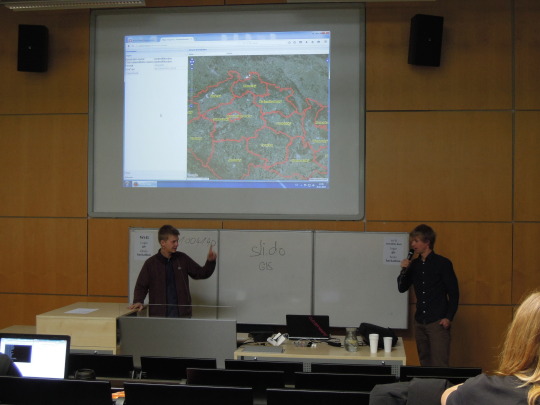
Hlavní ogranizátoři Vojta a Kuba Dubrovští.
Na své si přišli fanoušci velkých dat a jejich zpracování, moderních směrů geoinformatiky - Smartcities, Industry 4.0, 3D zobrazení a příznivci open data a open source nástrojů.

Tomáš Bonacina předává své znalosti katastru.
Za CleverMaps vystoupili Tomáš Bonacina a Olda Kahoun na téma katastru nemovitostí a jeho praktického využití. Trochu nečekaně se přidal ještě Michal Zimmermann, který bravurně nahradil přednášku od SocialBakers se svým příspěvkem o dolování geodat ze sociálních sítí.
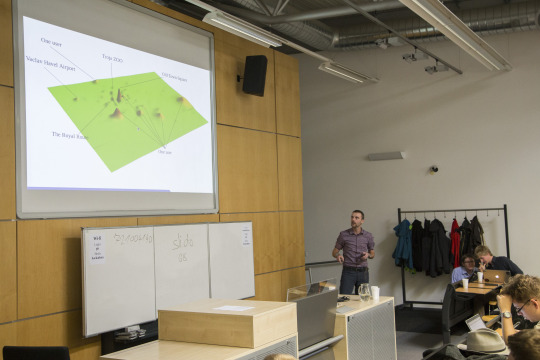
Michal Zimmermann a jeho netradiční pohled na Prahu.
Organizace byla poměrně volná a i přesto opravdu bezchybná. Celá akce se i přes svůj každoroční růst nesla ve velmi přátelském duchu, nechyběly domácí buchty, zákusky a jihomoravské víno. Podařilo se uspořádat setkání kreativních lidí z velkých i malých firem, univerzit, zástupce úřadů i studentů.

Takřka rodinný coffee break.
Videa a slidy jednotlivých přednášek už se zpracovávají a budou dostupné z webu gishackathon.eu. Začíná se proslýchat, že na jaře bude mít GISHackathon pokračování. Dokonce to vypadá, že se tentokrát bude opravdu programovat. Ať už to dopadne jakkoli, rozhodně se máme na co těšit. Sledujte twitter @GISHackathon ať se o všem dozvíte co nejdříve.
Retence vody v krajině
25.11.2015 18:50 Asociace poskytovatelů služeb v pozemkových úpravách Ačkoli celková retenční kapacita zemědělských půd v ČR (schopnost zadržovat vodu) činí 8 400 000 000 m3 vody, ve skutečnosti udrží tato půda jen 5 040 000 000 m3. Snížená schopnost krajiny zadržovat vodu je dána především špatným hospodařením, poškozením půdy vodní a větrnou erozí, nadměrným utužením půdy a ztrátou biologické aktivity půd. Pokud by se ale do…Metodika Technická protierozní opatření Hrazení bystřin a strží
25.11.2015 18:30 Asociace poskytovatelů služeb v pozemkových úpravách Cílem hrazení bystřin je úprava či obnova přirozeného vodního biotopu toku v celém rozsahu průtoků. Mělo by jít o komplexní opatření úprav odtokových poměrů v povodí biotechnickými prostředky a následně úprav v korytech a strží převážně stavebně technickými prostředky. Důraz je kladen na přírodě blízká řešení (cílená volba opevnění, volba materiálu, migrační prostupnost toku, vegetační…20151125-výběrové řízení-ředitelé KP Ústí n.Orlicí, Svitavy, Pardubice, Chrudim, Praha
25.11.2015 9:17 ČÚZK - předpisy a opatření /Aktuality-resort/2015/20151125-vyberove-rizeni-reditele-KP-Usti-n-Orlici20151125-výběrové řízení-ředitelé KP Ústí n.Orlicí, Svitavy, Pardubice, Chrudim, Praha
25.11.2015 9:17 ČÚZK /Aktuality-resort/2015/20151125-vyberove-rizeni-reditele-KP-Usti-n-OrliciZpravodaj Kartografické společnosti ČR 3/2015
25.11.2015 8:12 Česká kartografická společnost Zpravodaj 3/2015 Kartografické společnosti České republiky je k dispozici.Bentley Systems' Event Draws a Global Presence in London, Explores Future of Infrastructure
23.11.2015 18:43 Bentley SystemsDne 7. 12. 2015 od 9:00 hodin
23.11.2015 12:00 Jihočeský kraj Dne 7. 12. 2015 od 9:00 hodin se v kruhovém sále zastupitelstva (č. dveří 2.010) uskuteční školení pro projektanty územně plánovacích dokumentací (http://geoportal.kraj-jihocesky.gov.cz/gs/data/uploads/uap_kraj/pozvanka_skoleni-projektantu_07122015.pdf) zaměřené na seznámení s Geoportálem Jihočeského kraje, s daty územně analytických podkladů a s dostupnými free SW pro práci s daty ÚAP. K účasti je možné se registrovat na e-mailu: kornerova@kraj-jihocesky.cz.Dne 7. 12. 2015 od 9:00 hodin
23.11.2015 12:00 Jihočeský kraj Dne 7. 12. 2015 od 9:00 hodin se v kruhovém sále zastupitelstva (č. dveří 2.010) uskuteční školení pro projektanty územně plánovacích dokumentací zaměřené na seznámení s Geoportálem Jihočeského kraje, s daty územně analytických podkladů a s dostupnými free SW pro práci s daty ÚAP. K účasti je možné se registrovat na e-mailu: kornerova@kraj-jihocesky.cz.Soutěž na nové logo
22.11.2015 23:01 Česká kartografická společnost Protože naše Společnost přijala nový název – Česká kartografická společnost (Czech Cartographic Society) – je nezbytné vytvořit nové logo. Stávající logo nevyhovuje především starým názvem Společnosti jako součásti loga. Výbor České kartografické společnosti proto vyhlašuje soutěž na nové logo České kartografické společnosti. Vítězný návrh bude základem pro profesionální vytvoření výtvarného stylu Společnosti. Požadavky […]Newsletter ČGS 2015/20
22.11.2015 16:35 Česká kartografická společnost Newsletter 2015/20 České geografické společnosti je k dispozici.RSS KGK SR není validní
19.11.2015 12:00 Komora geodetů a kartografů SR Společnost Duomedia.sk, výrobce webových stránek KGK, byla požádána o opravu RSS kanálu.METODIKA ZMÍRNĚNÍ NEGATIVNÍCH DŮSLEDKŮ HYDROLOGICKÝCH EXTRÉMŮ A EROZNÍCH ÚČINKŮ POVRCHOVÉHO ODTOKU AGRÁRNÍMI VALY (Případová studie Verneřice)
18.11.2015 22:22 Asociace poskytovatelů služeb v pozemkových úpravách Prostřednictvím našich stránek bych se chtěl vrátit k některým již dříve zveřejněným, ale dle mého soudu málo rozšířeným, technickým podkladům projekční praxe, využitelných v oboru pozemkových úprav. Dnes bych chtěl připomenout metodiku, která je výsledkem řešení výzkumného projektu MZe ČR NAZV 08-82126 „Zajištění harmonizace krajinotvorné, hydrologické a produkční funkce agrárních valů a teras pro diverzifikaci…20151118-seznam ÚOZI
18.11.2015 14:18 ČÚZK - předpisy a opatření /Aktuality-resort/2015/20151118-seznam-UOZIRozhovor s Martinem Hrdličkou o rodinném podnikání
18.11.2015 12:00 Hrdlička Jak jsme Vás již na našich webových stránkách informovali, společnost HRDLIČKA se umístila na bronzové příčce v soutěži Equa bank Rodinná firma roku. Co stojí za úspěchem firmy prozradil v rozhovoru pro časopis Profit ředitel společnosti Martin Hrdlička.V části Zajímavé stránky byl u
18.11.2015 12:00 Plzeňský kraj V části Zajímavé stránky byl uveřejněn odkaz na Strategické hlukové mapy.V části Zajímavé stránky (http
18.11.2015 12:00 Plzeňský kraj V části Zajímavé stránky (http://geoportal.plzensky-kraj.cz/gs/zajimave-stranky/) byl uveřejněn odkaz na Strategické hlukové mapy (http://szu.maps.arcgis.com/home/).Rozhovor s Martinem Hrdličkou o rodinném podnikání
18.11.2015 9:00 Hrdličkarozhovor_casopis_profit
The post Rozhovor s Martinem Hrdličkou o rodinném podnikání appeared first on HRDLIČKA spol. s r.o. - komplexní služby v oblasti geodézie.
Pozemkové úpravy - nástroj na riešenie rozdrobenosti pozemkového vlastníctva, revitalizáciu krajiny a rozvoj vidieka
16.11.2015 18:41 Komora pozemkových úprav SRPropagačná brožúra o pozemkových úpravách vo formáte PDF.
Pozemkové úpravy - nástroj na riešenie rozdrobenosti pozemkového vlastníctva, revitalizáciu krajiny a rozvoj vidieka
16.11.2015 18:41 Komora pozemkových úprav SR Propagačná brožúra o pozemkových úpravách vo formáte PDFDruhý firemní hackathon v CleverMaps
16.11.2015 18:24Na základě kladných reakcí na první interní hackathon, který proběhl 14. – 15. května jsme se rozhodli, že určitě znovu nějaký uspořádáme. A tak po půl roce se na dva dny (12. - 13. 11.) sjeli do brněnské kanceláře zase všichni programátoři a začal náš druhý firemní hackathon.
Tentokrát byly témata zaměřena tak, aby výsledky z hackathonu byly prospěšné pro všechny týmy a produkty CleverMaps. Vybrala se tedy tři nezávislá témata na mapu a jedno téma se zaměřilo na mobilní aplikaci.

K úspěšnému hackathonu ale nestačí jen mysl a rychlé prsty na klávesnici a tak o plné žaludky a pitný režim našich programátorů bylo s láskou postaráno. O jídlo, pití a dobrou atmosféru se skvěle postarala dámská část týmu.
Atmosféra společného úsilí a práce byla vyloženě nakažlivá a pracovalo se dlouho do noci. A brzo ráno se zase zasedalo za stroje a pokračovalo se v práci. Někteří se nezdržovali ani vylézáním ze spacáku a rovnou se vrhli na práci.

V rámci pátečního vyhlášení představili všechny týmy výsledky své dvoudenní práce a mezi sebou pak hlasovali pro vítěze hackathonu. Tím se nakonec stal tým ve složení Martin Tesař a Jiří Žaloudek zabývající se využitím vektorových dlaždic v mapě.


20. celostátní konference o územním plánování a stavebním řádu
16.11.2015 18:02 Asociace poskytovatelů služeb v pozemkových úpravách Ministerstvo pro místní rozvoj uspořádalo v Ostravě ve dnech 5. a 6. listopadu 2015 jubilejní 20. celostátní konferenci o územním plánování a stavebním řádu. Na přípravě konference se podílel Ústav územního rozvoje. Prezentace z konference Vývoj stavebního práva JUDr. Jan Mareček (01-vyvoj-stavebniho-prava.pdf, 301 kB) Územní plánování a projekty společného zájmu Ing. Zdeňka Fialová (02-uzemni-planovani-a-projekty-spolecneho-zajmu.pdf, 280…Hystéria okolo predaja ornej pôdy
16.11.2015 10:14 Komora pozemkových úprav SRPrinášame odkaz na článok prezentujúci jeden z mnohých názorov na aktuálnu tému obmedzenia predaja ornej pôdy.
Hystéria okolo predaja ornej pôdy
16.11.2015 10:14 Komora pozemkových úprav SR Prinášame odkaz na článok prezentujúci jeden z mnohých názorov na aktuálnu tému obmedzenia predaja ornej pôdy.20151116-GaKo-11-2015
16.11.2015 9:08 ČÚZK - předpisy a opatření /Aktuality-resort/2015/20151116-GaKo-11-2015Provozovna Litomyšl
14.11.2015 17:09 GIS-STAVINVEX Abychom měli blíže k zákazníkům nejen z Moravskoslezského kraje, otevřeli jsme novou provozovnu ve výkladní skříni architektury a to přímo v srdci města Litomyšl. Provozovna […]Laserové skenování fasád a exteriérů
12.11.2015 21:22 GIS-STAVINVEX Galerie výtvarného umění Ostrava Galerie výtvarného umění Ostrava ve spolupráci se společností GIS-STAVINVEX a.s. vytvořila pomocí technologie laserového skenování virtuální 3D model exteriéru budovy Domu […]20151112-termín zkoušek odborné způsobilosti
12.11.2015 8:54 ČÚZK - předpisy a opatření /Aktuality-resort/2015/20151112-termin-zkousek-odborne-zpusobilosti20151112-termín zkoušek odborné způsobilosti
12.11.2015 8:54 ČÚZK /Aktuality-resort/2015/20151112-termin-zkousek-odborne-zpusobilostiRealizací účinných opatření pracoviště Státního pozemkového úřadu přispívají k ochraně před dlouhodobým suchem
12.11.2015 0:00 Státní pozemkový úřad Praha, 12. listopadu 2015 – Pobočka Státního pozemkového úřadu (SPÚ) v Prostějově zajistila realizaci stavby polní cesty, víceúčelové nádrže a lokálního biocentra v katastrálním území Čelčice.Verze 12.51 našich produktů KOKEŠ a PROLAND
10.11.2015 18:10 GEPROZveřejnili jsme verzi 12.51 našich produktů KOKEŠ, a PROLAND.
Stahovat ji můžete z obvyklého umístění na našem download serveru:
Novinky v jednotlivých produktech naleznete v přehledu změn produktu:
… >>Verze 12.51 našich produktů KOKEŠ a PROLAND
10.11.2015 18:10 GEPROZveřejnili jsme verzi 12.51 našich produktů KOKEŠ, a PROLAND.
Stahovat ji můžete z obvyklého umístění na našem download serveru:
Novinky v jednotlivých produktech naleznete v přehledu změn produktu:
… >>Poděkování
10.11.2015 13:30 CEDA Maps a.s. Praha, 10. listopadu 2015 – Společnost Central European Data Agency, a.s. děkuje všem účastníkům konference GIS Esri v ČR, kteří nás navštívili v prostorách našeho stánku, nebo přišli shlédnout firemní referát jednoho z našich kolegů.Zároveň srdečně blahopřejeme všem výhercům naší soutěže a těšíme se na další spolupráci.
ContextCapture Promises Accurate High Resolution Reality Modeling Option for Infrastructure
5.11.2015 21:08 Bentley SystemsIntegrated BIM Process Helps Morphosis Deliver Award-Winning Bill & Melinda Gates Hall Project
5.11.2015 20:31 Bentley SystemsBentley Helps DOTs Prepare for Compliance Mandate on National Bridge Inventory and National Tunnel Inventory
4.11.2015 21:29 Bentley SystemsTrack Access Services Completes Data Capture at a Quarter of the Cost
4.11.2015 21:28 Bentley SystemsWitnessing Dramatic Business Process Improvements at Bentley's Year in Infrastructure #YII2015
4.11.2015 21:24 Bentley SystemsTata Consulting Engineers Builds Jain SRM Ashram for 100 Years of Sustainability Using Bentley Software
4.11.2015 21:22 Bentley SystemsRAM Produces Optimal Structural Solution for the Tallest Building in Brazil
4.11.2015 21:20 Bentley SystemsTetra Tech Wins 2015 Bentley Be Inspired Award for Innovations in Mining
4.11.2015 21:10 Bentley SystemsPřevod kompetencí k hodnocení půdy na SPÚ přinese víc škody než užitku
4.11.2015 19:01 Asociace poskytovatelů služeb v pozemkových úpravách Zdroj: www.agris.cz | 29.10.2015 | ASZ Jedním z mnoha na první pohled neviditelných opatření, která nepřímo přispějí ke zhoršení stavu naší krajiny, je změna instituce, která bude od příštího roku provádět aktualizaci bonitace půdně-ekologických jednotek (BPEJ). To dosud prováděl Výzkumný ústav meliorací a ochrany půd (VÚMOP), nově to má být podle plánu stávajícího vedení ministerstva zemědělství…Zpráva o stavu vodního hospodářství České republiky v roce 2014
4.11.2015 18:52 Asociace poskytovatelů služeb v pozemkových úpravách Již po osmnácté Ministerstvo zemědělství spolu s Ministerstvem životního prostředí vydává zprávu o stavu vodního hospodářství České republiky kde mimo jiné vyzdvihuje také význam pozemkových úprav pro snížení erozní ohroženosti půd, následků sucha a zvyšování ochrany před negativními účinky povrchového odtoku. Zpráva o stavu vodního hospodářství.pdfÚspěch v podnikatelské soutěži Equa bank Rodinná firma roku
4.11.2015 12:00 Hrdlička U příležitosti Dne podnikatelů proběhlo 3. listopadu slavností vyhlášení podnikatelské soutěže Equa bank Rodinná firma roku. Nominaci v letošním ročníku získala i naše společnost a v konkurenci 84 firem obsadila skvělé 3. místo. Manželé Hrdličkovi sami k umístění v soutěži dodávají: " toto ocenění není jen úspěchem naší rodiny, ale všech našich zaměstnanců."V sekci Zajímavé stránky (http
3.11.2015 12:00 Jihočeský kraj V sekci Zajímavé stránky (http://geoportal.kraj-jihocesky.gov.cz/gs/zajimave-stranky/) byl doplněn odkaz na mapovou aplikaci W3W (https://map.what3words.com/), která umožňuje určení polohy kdekoliv na světě pomocí tří slov v prostorové mřížce 3x3 m.V sekci Zajímavé stránky byl d
3.11.2015 12:00 Jihočeský kraj V sekci Zajímavé stránky byl doplněn odkaz na mapovou aplikaci W3W, která umožňuje určení polohy kdekoliv na světě pomocí tří slov v prostorové mřížce 3x3 m.Ve všech mapových službách byl
3.11.2015 12:00 Plzeňský kraj Ve všech mapových službách byla provedena aktualizace vektorových katastrálních map (DKM, KMD a ÚKM). Data jsou s platností k 1. 10. 2015. Nově je v DKM zpracováno 26 katastrálních území. Stav digitalizace je k dispozici zde (http://cuzk.cz/Dokument.aspx?AKCE=META:SESTAVA:MDR004_XSLT:WEBCUZK_KRAJ:400). Pro práci s daty katastru nemovitostí je možné například využít tuto mapovou službu (http://mapy.kr-plzensky.cz/gis/katastr/). Seznam všech mapových služeb je k dispozici zde (http://geoportal.plzensky-kraj.cz/gs/vsechny-mapy/). Zároveň došlo k aktualizaci dat ve výdejním modulu.Ve všech mapových službách byl
3.11.2015 12:00 Plzeňský kraj Ve všech mapových službách byla provedena aktualizace vektorových katastrálních map (DKM, KMD a ÚKM). Data jsou s platností k 1. 10. 2015. Nově je v DKM zpracováno 26 katastrálních území. Stav digitalizace je k dispozici zde. Pro práci s daty katastru nemovitostí je možné například využít tuto mapovou službu. Seznam všech mapových služeb je k dispozici zde. Zároveň došlo k aktualizaci dat ve výdejním modulu.20151102-výběrové řízení ředitel ZKI v Českých Budějovicích
2.11.2015 16:33 ČÚZK /Aktuality-resort/2015/20151102-vyberove-rizeni-reditel-ZKI-v-Ceskych-Bud20151102-výběrové řízení ředitel ZKI v Českých Budějovicích
2.11.2015 16:33 ČÚZK - předpisy a opatření /Aktuality-resort/2015/20151102-vyberove-rizeni-reditel-ZKI-v-Ceskych-Bud20151102-výběrové řízení ředitel ZKI v Opavě
2.11.2015 16:29 ČÚZK - předpisy a opatření /Aktuality-resort/2015/20151102-vyberove-rizeni-reditel-ZKI-v-Opave20151102-výběrové řízení ředitel ZKI v Opavě
2.11.2015 16:29 ČÚZK /Aktuality-resort/2015/20151102-vyberove-rizeni-reditel-ZKI-v-Opave20151102-výběrové řízení ředitel ZKI v Plzni
2.11.2015 16:27 ČÚZK - předpisy a opatření /Aktuality-resort/2015/20151102-vyberove-rizeni-reditel-ZKI-v-Plzni20151102-výběrové řízení ředitel ZKI v Plzni
2.11.2015 16:27 ČÚZK /Aktuality-resort/2015/20151102-vyberove-rizeni-reditel-ZKI-v-Plzni20151102-výběrové řízení ředitel ZKI v Praze
2.11.2015 16:21 ČÚZK - předpisy a opatření /Aktuality-resort/2015/20151102-vyberove-rizeni-reditel-ZKI-v-Praze20151102-výběrové řízení ředitel ZKI v Praze
2.11.2015 16:21 ČÚZK /Aktuality-resort/2015/20151102-vyberove-rizeni-reditel-ZKI-v-PrazeGeosense mezi nejrychleji rostoucími firmami střední a východní Evropy
2.11.2015 12:00 Cleerio Dovolte nám podělit se s Vámi o výbornou zprávu. Firmě Geosense se letos i díky skvělé spolupráci s obchodními partnery a kolegy ze Slovenska podařilo umístit v soutěži Deloitte Technology Fast 50, jíž se účastní nejrychleji rostoucí firmy střední a východní Evropy. Po nedávném úspěchu mezi start-upy jsme tento rok vstoupili do hlavní kategorie Fast 50, kde jsme skončili na výborném 5. místě mezi firmami z České republiky a na 35. místě v rámci celého CEE regionu. Hlavním hodnotícím kritériem byl nárůst obratu za poslední 4 roky, který činil 345 %. Bereme úspěch v anketě Deloitte jako příjemné zadostiučinění a potvrzení toho, že to, co děláme, má smysl. Výsledky soutěže potvrzují nárůst našich spokojených zákazníků a užitečnost mapové aplikace. Jsme rádi, že volba strategie blízké spolupráce se zákazníky a partnery a vylepšování produktu na základě jejich podnětů přináší skvělé výsledky. Celé znění výsledků soutěže Deloitte Fast 50 najdete v reportu Deloitte Technology Fast 50. O soutěži více také v reportáži České televize a Hospodářských novinách....Od 1. 1. 2016 se mění na zákla
2.11.2015 12:00 Plzeňský kraj Od 1. 1. 2016 se mění na základě zákona č. 15/2015 (http://www.sbirka.cz/POSL4TYD/NOVE/15-015.htm) správní hranice Plzeňského kraje. V souvislosti se zrušením vojenského újezdu Brdy dochází k rozšíření správního území následujících obcí: Borovno, Dobřív, Spálené Poříčí, Mirošov, Míšov, Strašice, Skořice, Štítov, Trokavec a Těně. Každé z těchto obcí přibyde jedno nové katastrální území a jejich hranice si lze zapínat v mapových službách. V mapových službách jsou postupně doplňována data za nové území. Už nyní je území zobrazováno na leteckých snímcích. Také kresba vektorové katastrální mapy je již zobrazována za daná katastrální území, která dnes spadají do Středočeského kraje. Kompletní doplnění a změna podkladových topografických map bude provedena až s platností k 1. 1. 2016. Mapa změn správních hranic Plzeňského kraje od 1. 1. 2016 je k dispozici zde (http://mapy.kr-plzensky.cz/dokumenty/zmena_hranic.png).Od 1. 1. 2016 se mění na zákla
2.11.2015 12:00 Plzeňský kraj Od 1. 1. 2016 se mění na základě zákona č. 15/2015 správní hranice Plzeňského kraje. V souvislosti se zrušením vojenského újezdu Brdy dochází k rozšíření správního území následujících obcí: Borovno, Dobřív, Spálené Poříčí, Mirošov, Míšov, Strašice, Skořice, Štítov, Trokavec a Těně. Každé z těchto obcí přibyde jedno nové katastrální území a jejich hranice si lze zapínat v mapových službách. V mapových službách jsou postupně doplňována data za nové území. Už nyní je území zobrazováno na leteckých snímcích. Také kresba vektorové katastrální mapy je již zobrazována za daná katastrální území, která dnes spadají do Středočeského kraje. Kompletní doplnění a změna podkladových topografických map bude provedena až s platností k 1. 1. 2016. Mapa změn správních hranic Plzeňského kraje od 1. 1. 2016 je k dispozici zde.Družice Sentinel-2A úspěšně pořizuje první snímky.
2.11.2015 8:45 Gisat Po radarové družici Sentinel-1A je to druhá družice vypuštěná speciálně pro evropský program Copernicus zaměřený na monitorování životního prostředí a bezpečnostních aplikace.Data katastru nemovitostí včet
30.10.2015 12:00 Jihočeský kraj Data katastru nemovitostí včetně účelové katastrální mapy byla v mapových aplikacích i výdejním modulu aktualizována k 1. 10. 2015.Tým Assets na výjezdní poradě na jihu Moravy
29.10.2015 10:00Pravidelná týmová výjezdní porada nás tentokrát zavedla do Moravského Žižkova na jižní Moravě. V malebném prostředí Penzionu Maděřič jsme strávili příjemný den i večer. V celodenním pracovním programu jsme se věnovali především tvorbě týmové vize na rok 2016.
V rámci ní jsme mj. probrali téma “happiness”, kde jsme se věnovali možnostem rozšíření našich mimopracovních aktivit, které k naší vědomé a svobodné firmě neodmyslitelně patří. Došlo i na témata pro náš vývojový tým, kde jsme se zaměřili především na to, co zlepšit, aby “nebylo co sázet” (pozn. v rámci akce Trees for bugs vysazujeme jménem uživatelů strom, za každou chybu, kterou v našich aplikacích objeví - více viz http://blog.clevermaps.cz/post/130751919545/clevermaps-sází-stromy).
Výsledkem pak byla týmová vize týmu Assets na rok 2016: “Nadšený tým vytváří chytrá řešení pro trh s půdou a překonává očekávání zákazníků”

Přidejte se k naší akci Plyšáci patří dětem
29.10.2015 7:34Je to téměř rok, kdy se v našich řadách zrodil a následně i zrealizoval nápad na sběr plyšových hraček, kterými jsme obdarovali děti z brněnské dětské nemocnice (více viz http://blog.clevermaps.cz/post/103632352884/clever-maps-ze).
Blížící se Vánoce nás inspirovaly k pokračování této úspěšné akce. Není totiž nad to rozveselit děti, které jsou nuceny prožít vánoční svátky v nemocnici. Pokud tedy máte doma přebytečné plyšové hračky, se kterými si vaše děti nehrají, máte jedinečnou příležitost udělat s nimi někomu dalšímu radost.
A jak to celé zrealizovat? Prostě je jen doneste či pošlete do naší kanceláře v Praze nebo v Brně. Nebo nám zavolejte. O zbytek se již postaráme. Poštovní adresa je zde: CleverMaps, Vídeňská 101/119, Dolní Heršpice, 619 00 Brno.

Zomrel Árpád Göncz
28.10.2015 17:00 Komora pozemkových úprav SR6.10.2015 zomrel Árpád Göncz, bývalý prezident Maďarska a jeden z nemnohých štátnikov v našom okolí, ktorý mal blízko k poľnohospodárstvu a poľnohospodárskej pôde.
Zomrel Árpád Göncz
28.10.2015 17:00 Komora pozemkových úprav SR 6.10.2015 zomrel Árpád Göncz, bývalý prezident Maďarska a jeden z nemnohých štátnikov v našom okolí, ktorý mal blízko k poľnohospodárstvu a poľnohospodárskej pôde.Je možné zrozumiteľnejšie zobrazenie katastrálnych máp pre verejnosť?
28.10.2015 15:22 Komora pozemkových úprav SRWebová aplikácia MAPKA priblížila katastrálne mapy širokému okruhu záujemcov. Zároveň odhalila, aké sú katastrálne mapy pre bežného človeka nezrozumiteľné a zložité.
Praktické příklady mapování pro podporu humanitárních a rozvojových projektů.
28.10.2015 8:45 Gisat Gisat se zúčastnil mezinárodního symposia 13th International Symposium on Geo-Disaster reduction. Přednášky se týkaly témat jako zemětřesení, sesuvy půdy, sopečné aktivity, tsunami, povodně, využití družicových snímků a možnosti ke snižování dopadů těchto přírodních událostí.20151027-výběrové řízení ředitel KP Vyškov, Hodonín, Znojmo
27.10.2015 8:50 ČÚZK /Aktuality-resort/2015/20151027-vyberove-rizeni-reditel-KP-Vyskov,-Hodoni20151027-výběrové řízení ředitel KP Vyškov, Hodonín, Znojmo
27.10.2015 8:50 ČÚZK - předpisy a opatření /Aktuality-resort/2015/20151027-vyberove-rizeni-reditel-KP-Vyskov,-HodoniStanoviska k aplikaci vyhlášky č. 357/2013 Sb.
26.10.2015 19:45 Asociace poskytovatelů služeb v pozemkových úpravách V zájmu sjednocení a předvídatelnosti postupů zeměměřických a katastrálních orgánů zveřejňuje Český úřad zeměměřický a katastrální některá stanoviska, která zaujal v obecné rovině k aplikaci ustanovení katastrální vyhlášky. Jedná se zpravidla o anonymizované odpovědi na došlé dotazy k aplikaci právních předpisů nebo o přípisy vzniklé při metodické činnosti. Český úřad zeměměřický a katastrální není kompetentní k podávání výkladů obecně závazných právních předpisů, stanovisko tak nemá pro…20151026-formuláře umožňující reklamaci-RÚIAN
26.10.2015 7:18 ČÚZK /Aktuality-resort/2015/20151026-formulare-umoznujici-reklamaci-RUIAN20151026-formuláře umožňující reklamaci-RÚIAN
26.10.2015 7:18 ČÚZK - předpisy a opatření /Aktuality-resort/2015/20151026-formulare-umoznujici-reklamaci-RUIAN20151026-výběrové řízení správce ISKN
26.10.2015 7:01 ČÚZK - předpisy a opatření /Aktuality-resort/2015/20151026-vyberove-rizeni-spravce-ISKN20151026-výběrové řízení správce ISKN
26.10.2015 7:01 ČÚZK /Aktuality-resort/2015/20151026-vyberove-rizeni-spravce-ISKNKrátky fotoreport z VZ KPÚ SR
25.10.2015 22:16 Komora pozemkových úprav SRPrinášame zopár obrázkov z valného zhromaždenia KPÚ SR v Banskej Bystrici.
Krátky fotoreport z VZ KPÚ SR
25.10.2015 22:16 Komora pozemkových úprav SR Prinášame zopár obrázkov z valného zhromaždenia KPÚ SR v Banskej Bystrici.Newsletter ČGS 2015/18
23.10.2015 12:32 Česká kartografická společnost Newsletter 2015/18 České geografické společnosti je k dispozici.Výstava Kouzlo starých map
23.10.2015 12:28 Česká kartografická společnost Výstava Kouzlo starých map je organizována Kartografickou společností ČR u příležitosti Mezinárodního roku mapy. Cílovou skupinou jsou zejména žáci základních a středních škol. Více naleznete zde.Vyměnili jsme volant za kormidlo a mapovali vodní toky
23.10.2015 12:00 TopGis Během jednoho dne jsme pořídili 120 km nových dat na přehradě Orlík. Přibližně 25000 hotových panoramat aktuálně zpracováváme pro další využití v SW GisManager. Podobně jako v okolí pozemních komunikací, které mapujeme automobilem, můžeme pořízené snímky z lodí využít pro mapování viditelných objektů. Tentokrát už to ale nejsou polohové informace o zastávkách, vodorovném dopravním značení nebo vegetaci20151023-výběrové řízení ředitel KP Olomouc
23.10.2015 9:59 ČÚZK - předpisy a opatření /Aktuality-resort/2015/20151023-vyberove-rizeni-reditel-KP-Olomouc20151023-výběrové řízení ředitel KP Olomouc
23.10.2015 9:59 ČÚZK /Aktuality-resort/2015/20151023-vyberove-rizeni-reditel-KP-OlomoucSpolečnost Trimble příchází s novou verzí programu Trimble eCognition Suite.
23.10.2015 8:45 Gisat Nová verze softwaru přináší především výrazné zlepšení výpočetní kapacity pro analýzu družicových, leteckých a dalších dat DPZ. Kromě více-jádrového zpracování je také vylepšeno využití doplňkových tematických GIS dat.Seminář o systému eCall - automatické volání z vozidla na tísňovou linku 112, 11. listopad 2015, Ostrava
22.10.2015 12:55 Český Kosmický PortálDne 11. listopadu 2015 se v Ostravě v dolní oblasti Vítkovic uskuteční seminář k problematice systému eCall - automatickému volání z vozidla na tísňovou linku 112. Návštěvníci semináře budou seznámeni s obecnými i technickými principy fungování systému eCall, s řešením problematiky interoperability systému napřích Evropou či s plánovaným budoucím rozvojem tohoto systému. Na závěr semináře je navíc připravena reálná demonstrace fungování systému eCall. Účast na akci je bezplatná, simultánní překlad do českého jazyka je zajištěn.
Seminář o systému eCall - automatické volání z vozidla na tísňovou linku 112, 11. listopad 2015, Ostrava
22.10.2015 12:55 Český Kosmický PortálDne 11. listopadu 2015 se v Ostravě v dolní oblasti Vítkovic uskuteční seminář k problematice systému eCall - automatickému volání z vozidla na tísňovou linku 112. Návštěvníci semináře budou seznámeni s obecnými i technickými principy fungování systému eCall, s řešením problematiky interoperability systému napřích Evropou či s plánovaným budoucím rozvojem tohoto systému. Na závěr semináře je navíc připravena reálná demonstrace fungování systému eCall. Účast na akci je bezplatná, simultánní překlad do českého jazyka je zajištěn.
Seminář o systému eCall - automatické volání z vozidla na tísňovou linku 112, 11. listopad 2015, Ostrava
22.10.2015 12:55 Český Kosmický PortálDne 11. listopadu 2015 se v Ostravě v dolní oblasti Vítkovic uskuteční seminář k problematice systému eCall - automatickému volání z vozidla na tísňovou linku 112. Návštěvníci semináře budou seznámeni s obecnými i technickými principy fungování systému eCall, s řešením problematiky interoperability systému napřích Evropou či s plánovaným budoucím rozvojem tohoto systému. Na závěr semináře je navíc připravena reálná demonstrace fungování systému eCall. Účast na akci je bezplatná, simultánní překlad do českého jazyka je zajištěn.
Pozvánka na konferenci GIS Esri v ČR 2015
22.10.2015 11:15 CEDA Maps a.s. Společnost Central European Data Agency, a.s. vás srdečně zve na konferenci GIS Esri v ČR. Tradiční akce se koná v termínu 4. a 5. listopadu 2015 v Kongresovém centru Praha.20151022-seznam ÚOZI
22.10.2015 9:03 ČÚZK - předpisy a opatření /Aktuality-resort/2015/20151022-seznam-UOZIOpakovaná výzva členom komory na úhradu členského príspevku
21.10.2015 20:28 Komora pozemkových úprav SROpakovaná výzva členom komory na úhradu členského príspevku za rok 2015 aj za predchádzajúce roky 2012 - 2014
Členské ako nákladová položka
21.10.2015 20:03 Komora pozemkových úprav SRVysvetlenie k zavedeniu úhrady členského príspevku do účtovníctva ako nákladovej položky
Kandidátka na členov predstavenstva a dozornej rady KPÚ SR
21.10.2015 19:39 Komora pozemkových úprav SRKandidátka na členov predstavenstva a dozornej rady KPÚ SR pre nadchádzajúce VZ KPÚ SR v Banskej Bystrici.




